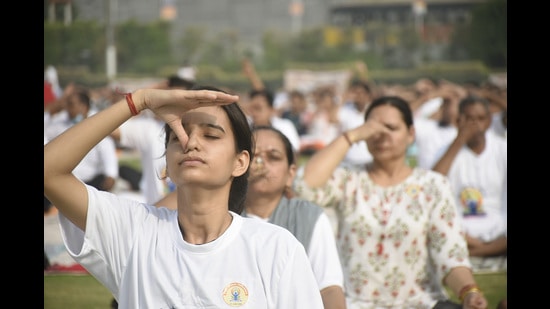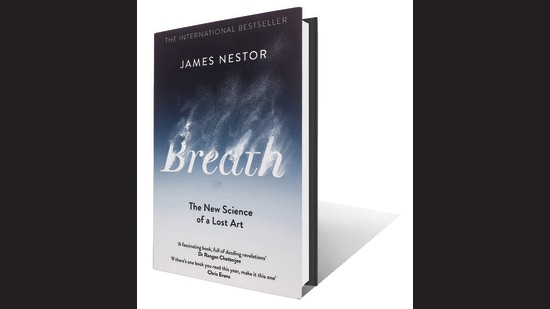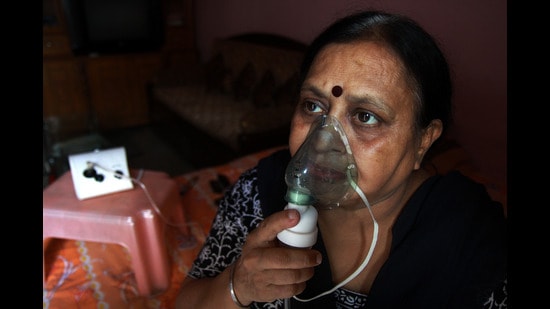Review: Breath; The New Science of a Lost Art by James Nestor
Breathing is more than an intuitive act and studies have shown that many maladies like asthma, anxiety and psoriasis can be reduced or reversed simply by changing the way we inhale and exhale
It fuels all life forms but extinguishes them too. Breath makes things come alive but the natural act of breathing is taken for granted. That’s where the problem lies because breathing is more than the intuitive act of inhaling and exhaling. Repeated 25,000 times a day, it has the potential to rejuvenate internal organs provided the extraordinary act of breathing is properly followed. Simply put, nine out of 10 of us don’t breathe correctly, aggravating a laundry list of chronic diseases. Hospitals too only deal with breathing emergencies related to specific maladies of the lungs. So what then is the way out?


The way to correct breathing is an individual responsibility but to consider it a simple act that is well understood is a fallacy. Science writer James Nestor’s Breath helps the reader breathe like never before. It is by following a tough breathing regime that the author could get his four hours of daily snoring reduced to just 10 minutes. For this incredible change to happen, he had to go through the awful experience of forcefully breathing through the mouth for the first 10 days, as his nostrils were plugged. He then reverted to nasal breathing for another 10 days with a piece of cloth sealing his lips. Apparently, the longer one breathes through the nose, the clearer the nasal cavities become.
An account of a protracted journey into the world of breathing, this book turns on its head all that we thought we knew about our most basic biological function. In a decade of travelling, research, and self-experimentation the author found that the vast benefits of breathing are sometimes unfathomable. While many drugs don’t work for panic, anxiety, and other fear-based conditions, slow and steady breathing acts as an effective therapy. Indeed, breathing is a missing pillar of health and is more important than what we eat or how much we exercise. The most interesting aspect is that unlike other drugs, breathing as a therapy works for every body.

Most of what Nestor has found isn’t new. Much of it, including inhaling-exhaling techniques, have been around for several millennia. Over the years, however, these techniques are being rediscovered and scientifically validated. “The fruits of this once fringe and often forgotten research are now redefining the potential of the human body” he says. Research in pulmonology, psychology, biochemistry, and physiology has already demonstrated that many modern maladies – asthma, anxiety, psoriasis – could either be reduced or reversed simply by changing the way we inhale and exhale. Still, Breath generates new interest in a subject that has long eluded modern medicine.
Curiosity after benefiting from a breathing course was what triggered Nestor’s interest in exploring new science in the “lost art”. Stories on the magical aspects of breathing abound in the world of yoga practitioners and the growing international popularity of the form in the past two decades has brought a large number of huffing and puffing exponents into public spaces. From alternate nostril breathing to breathing coordination, and from resonant breathing to the Buteyko breathing, Nestor has explored all the breathing techniques that have an impact on human health and longevity. Having benefited from proper breathing himself, the author considers himself a self-styled “pulmonaut” ready to take readers on a breathing mission.

Breath raises the hope that the renewed interest in breathing techniques will act as a preventive medicine that helps in retaining the body’s balance such that mild problems don’t grow into more serious health issues. Should we lose that balance from time to time, breathing can often bring it back. After all, even a small change in the body’s functions is reflected in its breathing pattern. However, modern medicine has yet to take a serious note of the wisdom that was accepted in the ancient world and accept that if the face is the index of the mind, breath is an indicator of well being.
James Nestor, who lives and breathes in San Francisco, deserves credit for presenting a modern perspective on a subject that has thus far remained a part of the specific cultural traditions of many societies. By validating it scientifically, he lends credence to breathing and encourages its widespread adoption. Breath claims that once it is read, you will never breathe the same again. There is virtue in letting that claim be.
Sudhirendar Sharma is an independent writer, researcher and academic.



